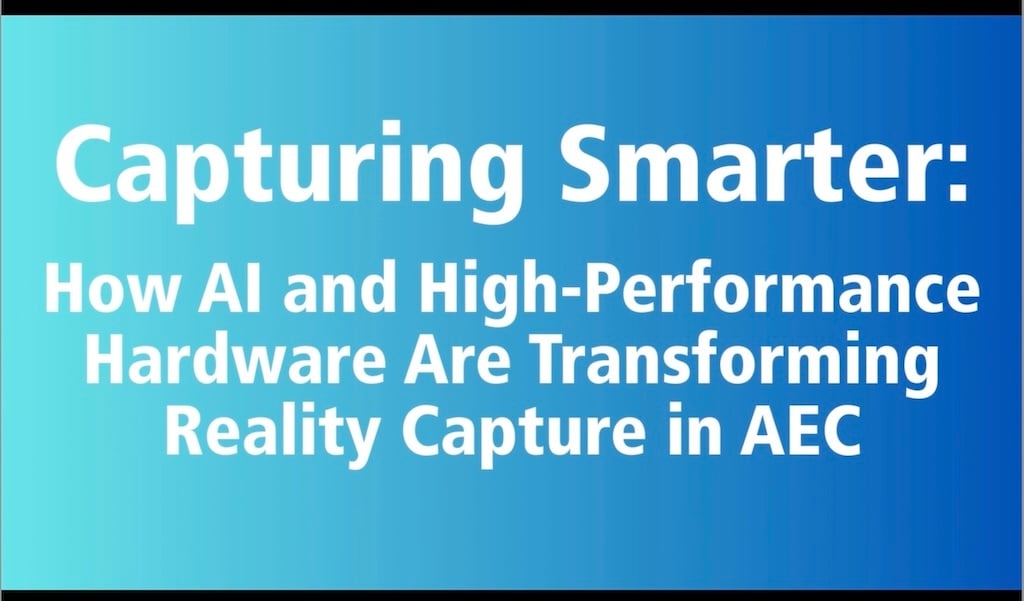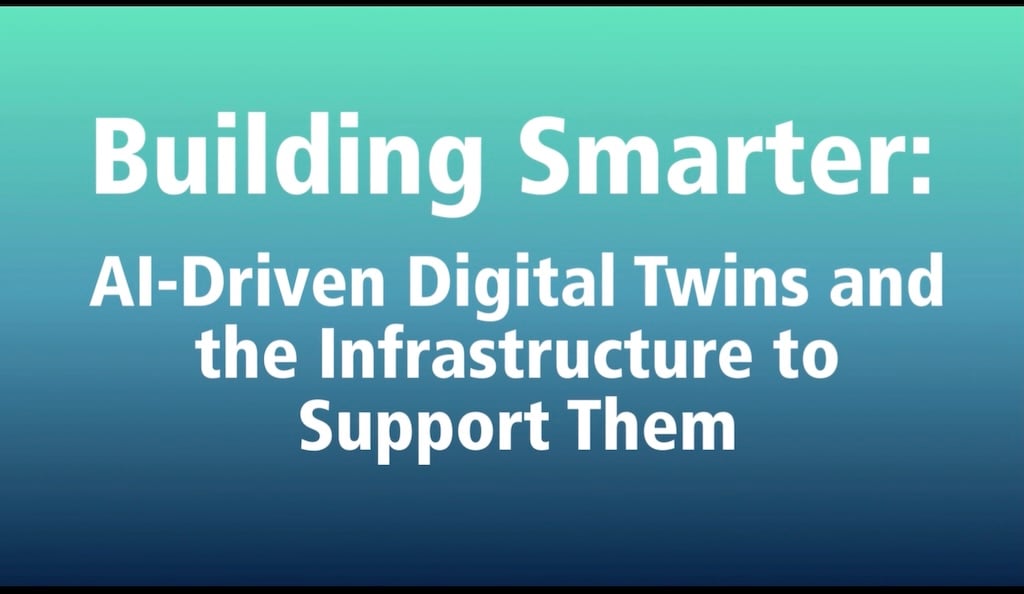
A bevy of key announcements and impressive product demonstrations highlighted Bentley Systems’ 2024 Year in Infrastructure and Going Digital Awards. Held in Vancouver, Canada, October 8–9, this year’s event provided numerous perspectives of how Bentley products have been used to address infrastructure challenges around the world, and how new alliances can address future challenges.

Bentley CEO Nicholas Cumins highlights how the iTwin platform can address infrastructure challenges at the 2024 Year in Infrastructure and Going Digital Awards. Image source: Bentley Systems.
New Alliances Announced
Among the biggest news was the announcement of a strategic partnership with Google to integrate Google’s geospatial content with Bentley’s infrastructure engineering software and digital twin platform. The integration enables infrastructure professionals to combine data created in Bentley software with Google’s geospatial data, AI, and analytics. Along with Bentley’s recent acquisition of Cesium — creator of the 3D Tiles open standard used by Google — the partnership provides Bentley software users and developers new ways to use Google Maps content to display projects in context and at scale with surrounding environments, enabling real-world perspectives and immersive 3D experiences.
Regarding the new partnership, Bentley CEO Nicholas Cumins said, “By combining Google’s extensive geospatial content and cloud capabilities with Bentley’s infrastructure engineering software and digital twin platform, infrastructure professionals can improve their work and ensure projects and assets are created and operated with greater resilience and sustainability.”
Bentley CTO Julien Moutte expanded on the Google partnership and was joined onstage by Google Vice President Yael Maguire to discuss the potential of spatial computing in infrastructure development. They shared visions of how geospatial and infrastructure technology can help address sustainability and resilience goals in a collaborative manner.

Google vice president Yael Maguire joined Bentley CTO Julien Moutte to discuss the potential of spatial computing in infrastructure development. Image source: Bentley Systems.
Openness Emphasized and New Tools Announced
Bentley also revealed a new civil site design product that incorporates generative AI capabilities for automated site layout and drawing production. Bentley’s OpenSite+ employs AI tools to streamline design of residential, commercial, and industrial sites, enabling designers to create, revise, and interact with requirements documentation and 3D site models through natural language interactions. The AI-powered design layout agent can evaluate multiple layout options and suggest alternative designs in real-time, helping users make better design decisions faster.
“By leveraging their past data to optimize future work, generative AI will revolutionize infrastructure design, improving engineers’ productivity and accuracy without sacrificing on quality,” said Mike Campbell, chief product officer at Bentley Systems. “OpenSite+ is just the first example of how Bentley is applying generative AI to benefit infrastructure design and project delivery.”
Bentley also unveiled its vision for open data ecosystems to advance infrastructure engineering processes. Joined by representatives from engineering and construction firms and infrastructure owner-operators, Bentley executives discussed how infrastructure professionals can improve project delivery and asset performance with smoother integration and interoperability across different tools and platforms. The Bentley Open Applications platform allows users to edit models from other vendors and use an open-source schema to query, analyze, and reuse data across multiple platforms.
“The future of infrastructure engineering is open,” said Cumins during his keynote address. “It’s flexible, collaborative, and built on a foundation of data that can be shared securely.”
In addition to highlighting Bentley’s diverse design and construction capabilities, speakers also emphasized a need to address operations and maintenance aspects of infrastructure. Acknowledging how open data and AI can enhance asset performance, Cumins noted how owner-operators need to make existing infrastructure more resilient, efficient, and capable of meeting current and future demands. Along these lines, Cumins announced Bentley Asset Analytics, a new product portfolio that combines existing products and solutions with new innovations and recent acquisitions, leveraging AI to generate insights into the condition of existing infrastructure assets, while reducing manual activities.
The portfolio includes Blyncsy, which automates roadway maintenance and asset inventory activities through crowd-sourced imagery and AI, and OpenTower iQ, which automates telecommunications tower lifecycle design through drone-capture imagery, other data sources, and AI. Bentley plans to cover a wide range of asset classes and incorporate diverse data capture techniques, such as IoT sensors and drones, to create solutions for owner-operators.
Addressing ongoing emphasis on sustainability, Bentley also announced new carbon analysis capabilities in iTwin Experience to assess and reduce carbon impacts. The new capabilities enable infrastructure engineers to simplify carbon reporting, visualize embodied carbon, and explore design alternatives, integrating users’ design data with their chosen carbon assessment tool.
Award Winners Recognized
As with previous Bentley events, attendees enjoyed impressive presentations of finalists in the Going Digital Awards. The annual awards honor infrastructure professionals and their innovative use of Bentley software in the design, construction, and operation, and maintenance of infrastructure projects. This year, presentations occurred on the first day of the event. Some 250 projects were nominated by organizations in 36 countries. Winners were selected from among 36 finalists in 12 categories by a panel of independent judges, and announced at the October 9 Going Digital Awards dinner and ceremony.
“This year, we received an impressive variety of submissions for the Going Digital Awards from users across the globe, showcasing groundbreaking projects that exemplify the future of infrastructure,” said Kristin Fallon, Chief Marketing Officer at Bentley Systems. “Today, we celebrate the extraordinary achievements of our finalists and winners. These visionary teams demonstrate the power of going digital across the infrastructure lifecycle to improve project delivery and asset performance.”
Industry Breakout Sessions and More
The event also included panel discussions on timely topics related to specific industries. Sessions covered cities and campuses, energy, transportation, and water. Throughout these sessions, topics such as collaboration, open data, AI, and infrastructure lifecycle considerations surfaced as common themes.
Forward-looking demonstrations were also ongoing in Bentley’s iLab Experience area, where Greg Demchak, Bentley’s Vice President for Emerging Technologies, and his team presented live demonstrations of leading edge technologies such as AI and the incorporation of geospatial data in digital twins. Team members and product users demonstrated the use of voice commands to employ AI technology in Open Site+ in designing a hypothetical hotel project. In a separate demonstration, an Iowa-Wisconsin river bridge design was merged with 3D Tiles and Google Earth data to display an expansive 3D perspective of a design in the context of its surroundings. Look for more coverage of these and other topics in future Cadalyst articles.

Award winners at Bentley Systems' Going Digital Awards winners! Image source: Bentley Systems.
You can catchup and watch YII, the breakout sessions, and more here at Bentley's web site.
***
Andrew G. Roe
Cadalyst contributing editor Andrew G. Roe is a registered civil engineer and president of AGR Associates. He is author of Using Visual Basic with AutoCAD, published by Autodesk Press. He can be reached at editors@cadalyst.com.
View All Articles





Share This Post